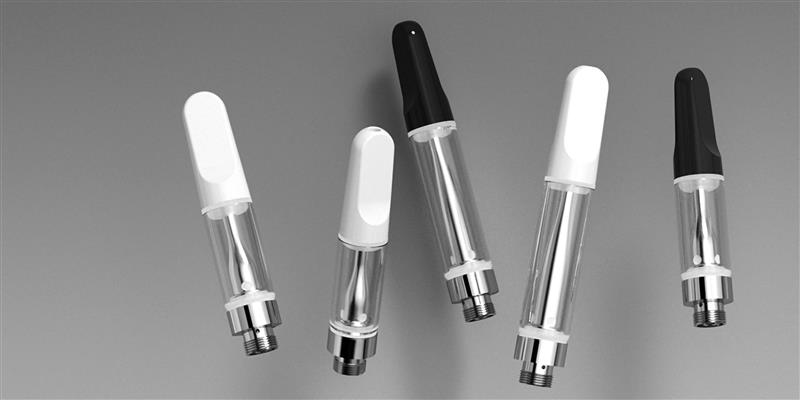Marijuana oil has become a hot topic these days, with more people curious about how it’s made and what benefits it might offer. Whether you're thinking about making it yourself or just curious about the process, understanding how marijuana oil is crafted can be both fascinating and educational.
In this article, we'll go through the step-by-step process of making marijuana oil, discuss the different extraction methods, and touch on the legal considerations involved. By the end, you'll have a solid grasp of what it takes to produce this popular product.
What is Marijuana Oil?
Before diving into the process, let's talk about what marijuana oil actually is. Essentially, marijuana oil is a concentrated extract derived from the cannabis plant. It contains cannabinoids like THC and CBD, which are the active ingredients responsible for the plant's effects. Marijuana oil can be used in various ways, including cooking, making edibles, or even for direct consumption or topical application.
The allure of marijuana oil lies in its potency and versatility. It allows users to experience the benefits of cannabis without having to smoke the plant material. Plus, it can be infused into a wide array of products, from gummies to lotions. Now, let's explore how this intriguing product is made.
Choosing the Right Strain
The journey to making marijuana oil starts with selecting the right cannabis strain. This choice is crucial because different strains have varying levels of cannabinoids and terpenes, which affect the final product's potency and flavor.
Are you looking for a high-THC oil for recreational use, or is a CBD-rich oil more your speed for its therapeutic benefits? Some popular strains for high-THC oil include Sour Diesel and OG Kush, while Charlotte's Web is renowned for its high CBD content. It's essential to know what you're aiming for and choose accordingly.
Once you've selected the strain, ensure it's fresh and properly cured. This means the cannabis has been dried and stored correctly to preserve its quality. Proper curing can significantly impact the flavor and potency of your oil.
Preparation of Cannabis Material
After you've chosen your strain, the next step is preparing the cannabis material. This involves breaking it down into smaller pieces to increase the surface area, which aids in the extraction process. You can use your hands or a grinder to achieve this.
One important step in preparation is decarboxylation. This process involves heating the cannabis to activate its cannabinoids. Raw cannabis contains THCA and CBDA, which need to be converted into THC and CBD through heat. Here's a simple way to decarb your cannabis:
- Preheat your oven to 220°F (105°C).
- Spread the cannabis evenly on a baking sheet lined with parchment paper.
- Bake for about 30-45 minutes, stirring occasionally.
- Once the cannabis has turned a light brown and emits a pleasant aroma, it's ready.
Decarboxylation might sound fancy, but it's just baking your cannabis to make it more effective. Now, with prepared cannabis, you're ready to move on to the extraction phase.
Extraction Methods
Extracting marijuana oil can be done through various methods, each with its pros and cons. The most common methods include solvent-based extraction, CO2 extraction, and oil infusion. Let's take a closer look at each:
Solvent-Based Extraction
This method uses solvents like ethanol, butane, or propane to strip cannabinoids and terpenes from the plant material. It's a popular choice because it's efficient and can produce high-quality oil. However, it's essential to ensure all residual solvents are removed to make the oil safe for consumption.
Here's a basic overview of the process:
- Combine the cannabis with the chosen solvent.
- Let the mixture sit to allow the cannabinoids to dissolve into the solvent.
- Filter out the plant material, leaving behind the solvent-cannabinoid mixture.
- Evaporate the solvent, often using gentle heat, to leave behind pure marijuana oil.
CO2 Extraction
CO2 extraction is known for producing high-quality oil without leaving behind harmful residues. This method uses supercritical CO2, which acts as a solvent at high pressures and low temperatures. It's more complex and requires specialized equipment, making it less accessible for home enthusiasts.
Here's how it works:
- The CO2 is pressurized and heated until it reaches a supercritical state.
- It’s then passed through the cannabis material, extracting cannabinoids and terpenes.
- The mixture is then depressurized, allowing the CO2 to evaporate, leaving behind the oil.
Oil Infusion
If you're looking for a simple, at-home method, oil infusion might be your best bet. This involves infusing cannabis into a carrier oil like olive or coconut oil. It's straightforward and doesn't require any fancy equipment, but the resulting oil is less concentrated than other methods.
Here's a quick guide:
- Combine decarboxylated cannabis with your chosen carrier oil in a saucepan.
- Heat the mixture on low for several hours, stirring occasionally. A double boiler can be helpful to prevent overheating.
- Strain the oil through a cheesecloth or fine sieve to remove plant material.
- Store the infused oil in a cool, dark place.
Oil infusion is perfect for those who want a gentle, approachable way to make their own marijuana oil without investing in expensive equipment.
Quality Control
Once you've extracted your marijuana oil, it's important to ensure its quality and safety. This involves checking for potency, purity, and any residual solvents if you used a solvent-based method.
Home testing kits are available that can give you a rough idea of your oil's cannabinoid content. However, for more accurate results, sending a sample to a professional lab is your best bet. They can provide a detailed analysis, ensuring your oil is safe and of high quality.
Quality control isn't just about safety; it also ensures consistency, especially if you plan to make more oil in the future. Knowing the potency of your oil allows you to dose it correctly and predict its effects more accurately.
Storing Your Marijuana Oil
Proper storage is key to maintaining the potency and flavor of your marijuana oil. Exposure to heat, light, and air can degrade the cannabinoids, reducing the oil's effectiveness over time. Here are some tips for storing your oil:
- Keep it in a cool, dark place, like a pantry or cupboard.
- Use airtight containers to prevent air exposure. Amber or dark glass bottles are ideal as they also protect against light.
- Avoid storing it in places with fluctuating temperatures, like near a stove or window.
By taking these steps, you can prolong the shelf life of your oil and ensure it remains potent and flavorful whenever you're ready to use it.
Legal Considerations
When it comes to making marijuana oil, it's essential to be aware of the legal landscape. While cannabis laws have relaxed in many parts of the United States, they still vary widely by state. Before embarking on your oil-making journey, check your local laws regarding home extraction and marijuana possession.
In some states, personal extraction is permitted as long as you adhere to specific guidelines. Others might prohibit certain extraction methods due to safety concerns, particularly those involving flammable solvents. Understanding your state's regulations can help you avoid potential legal issues.
Additionally, remember that federal law still classifies cannabis as a controlled substance. While enforcement has shifted towards state-level jurisdiction, it's good to stay informed about both state and federal regulations.
Safety Tips and Precautions
Safety should always be a priority when making marijuana oil, especially if you're using solvent-based extraction methods. These processes can be hazardous if not handled correctly. Here are some safety tips to keep in mind:
- Work in a well-ventilated area to avoid inhaling fumes.
- Avoid open flames or sparks if using flammable solvents.
- Wear protective gear, such as gloves and goggles, to protect your skin and eyes.
- Keep a fire extinguisher nearby in case of emergencies.
For those new to extraction, starting with simpler methods like oil infusion can mitigate many of these risks. No matter your chosen method, always prioritize safety and take appropriate precautions to protect yourself and those around you.
Using Marijuana Oil
Now that you've made your marijuana oil, you might be wondering about the best ways to use it. The versatility of marijuana oil is part of its appeal, allowing it to be used in various applications. Here are a few popular options:
- Edibles: Infuse your oil into homemade treats like brownies, gummies, or salad dressings. Remember to dose carefully, as edibles can be potent.
- Tinctures: Use a dropper to take the oil under your tongue for quick absorption.
- Topicals: Blend the oil with lotions or balms for a soothing, localized effect on the skin.
- Vaping: If your oil is suitable, it can be used in vape pens designed for oil concentrates.
Experimenting with different methods can help you find what works best for your needs and preferences. Just remember to start with small doses, especially if you're new to marijuana oil, to gauge its effects.
Final Thoughts
We've covered a lot of ground on how marijuana oil is made, from selecting the right strain and preparing the cannabis material to choosing your extraction method and ensuring quality control. Each step plays a part in creating a product that suits your needs, whether you're after therapeutic benefits or just a new way to enjoy cannabis.
When it comes to packaging your homemade oil, Gamut has plenty of options to help you with storage. With over a decade of experience, Gamut's full spectrum packaging provider offers jars, bottles, and more to keep your product fresh and potent. Whether you need stock options or custom designs, Gamut runs the gamut to meet your packaging needs.



















